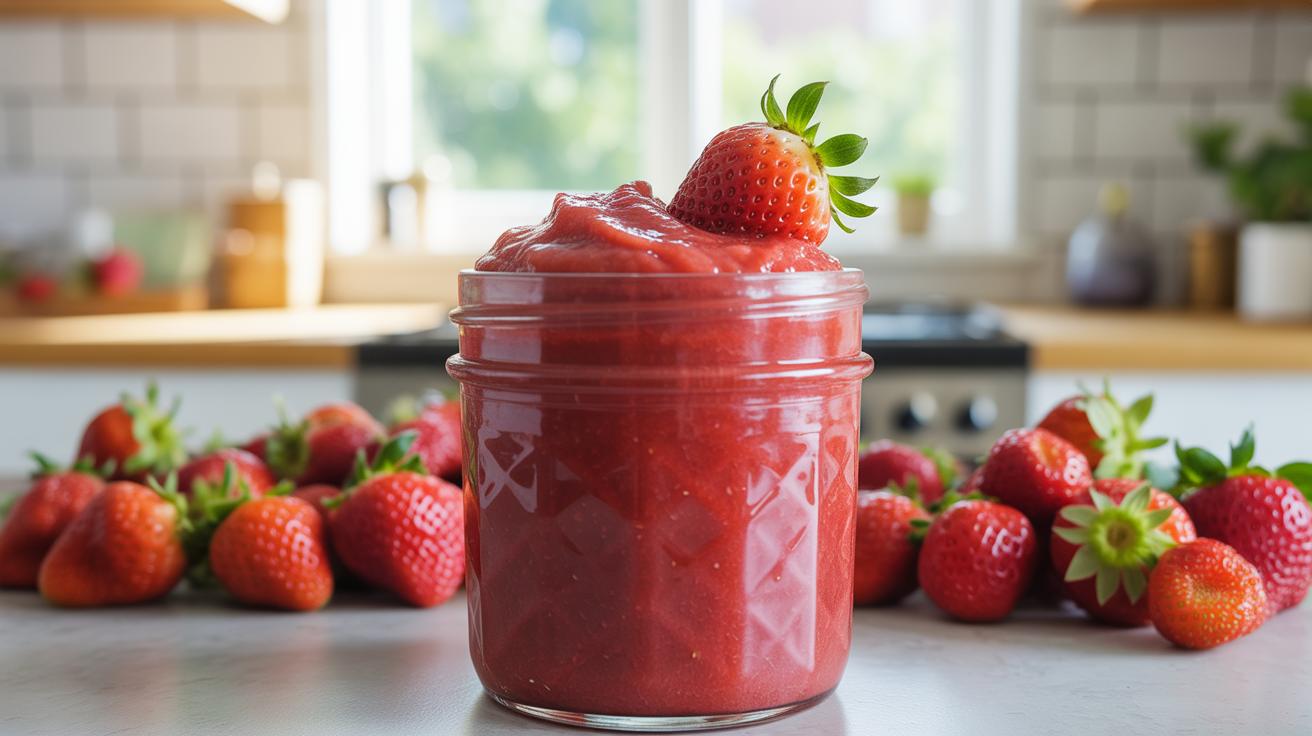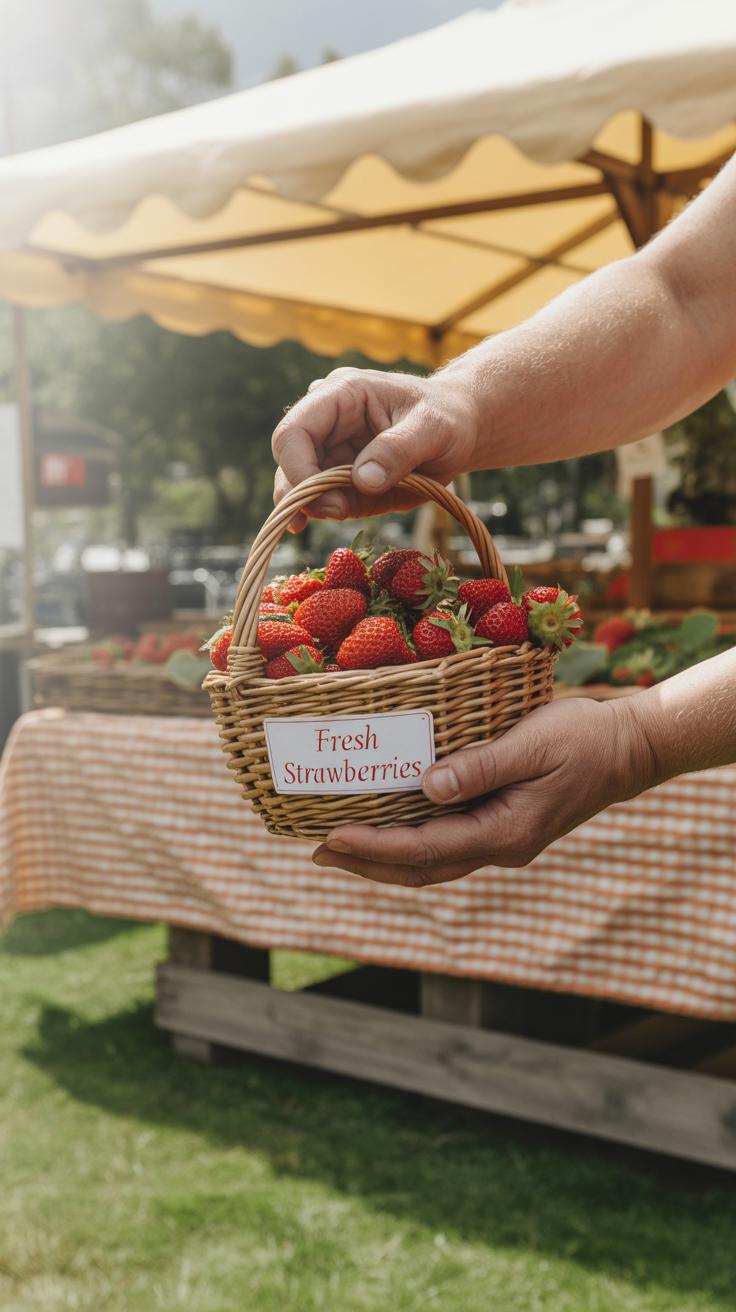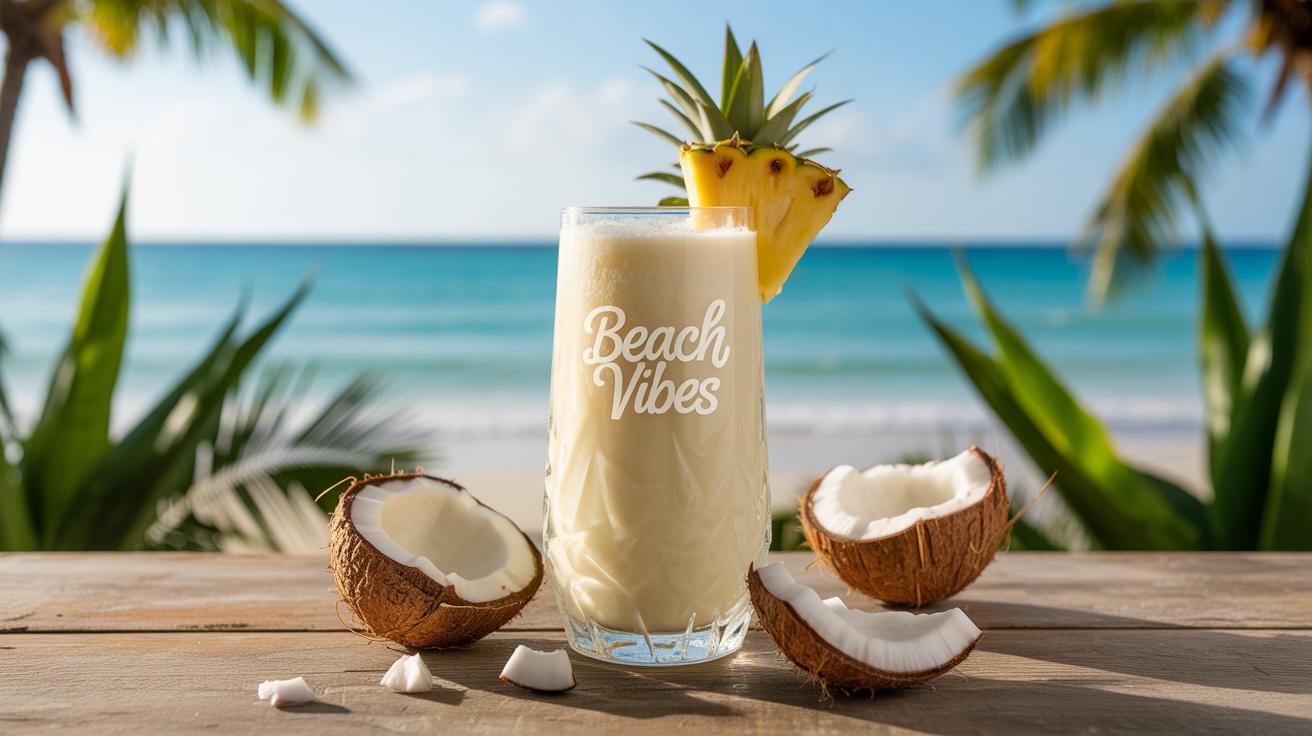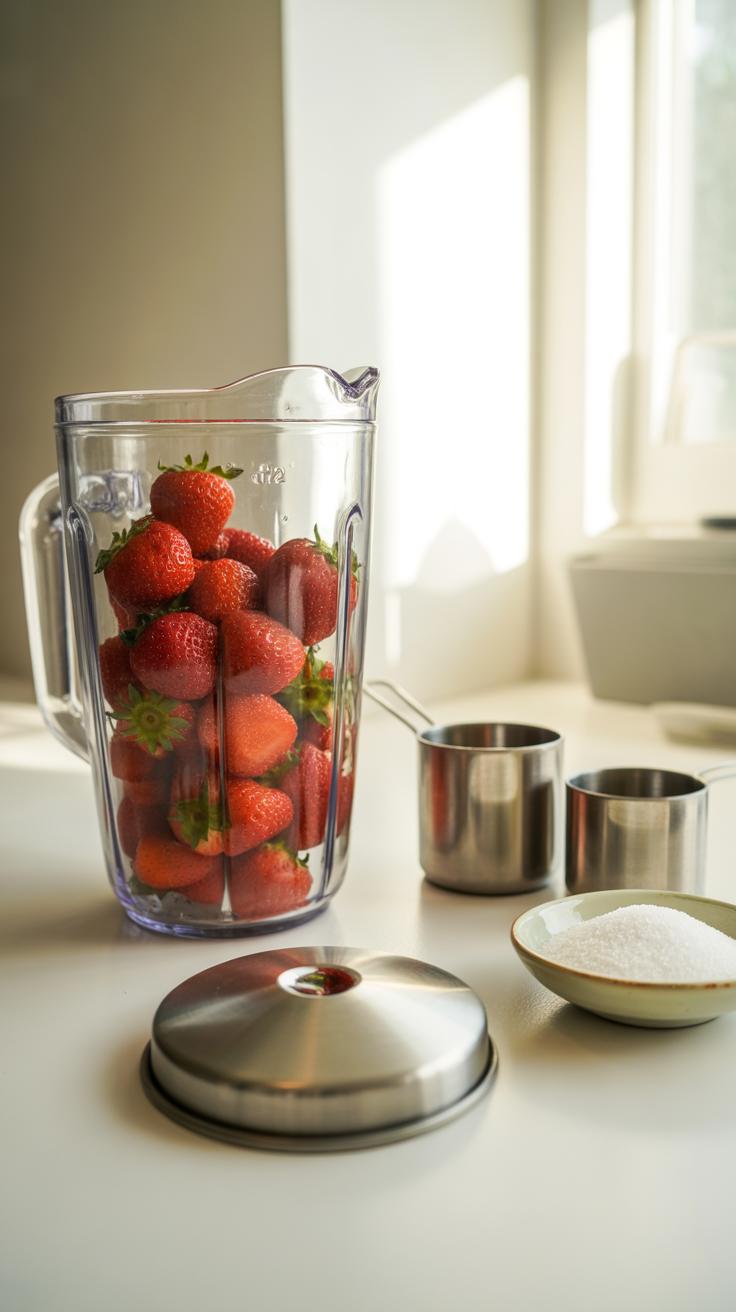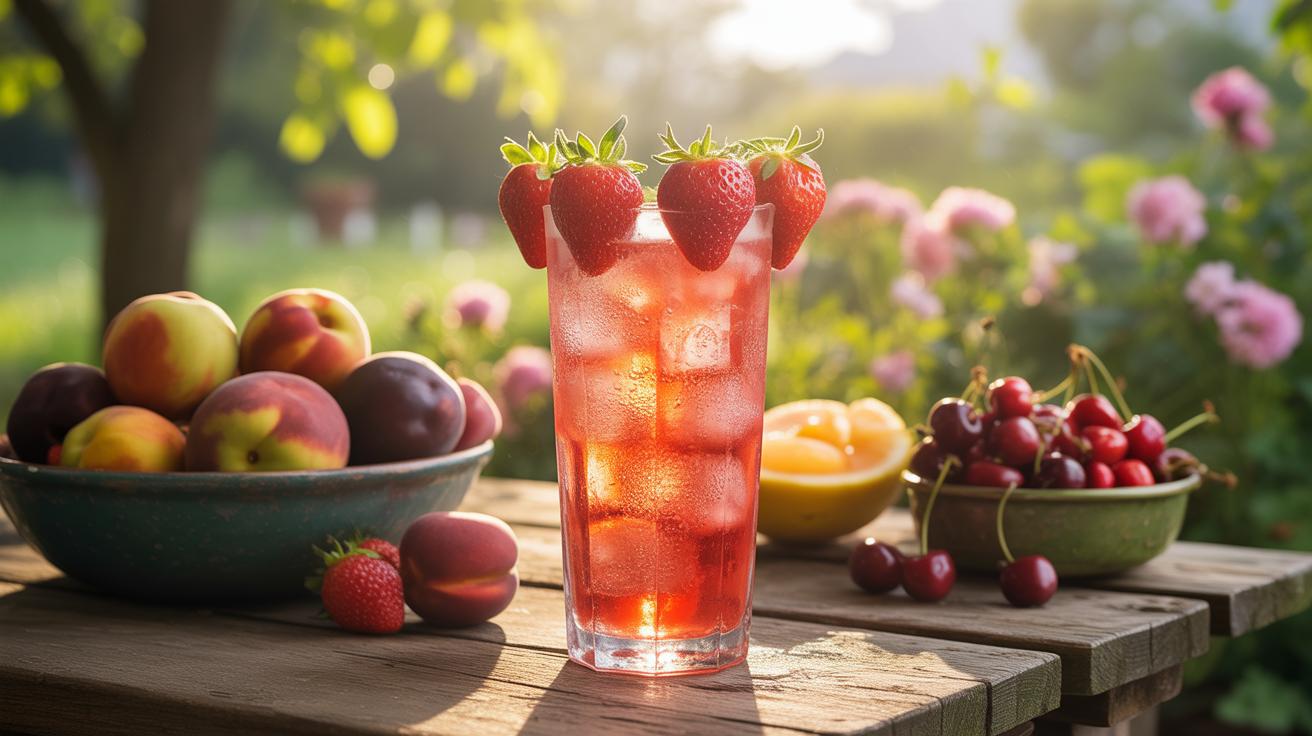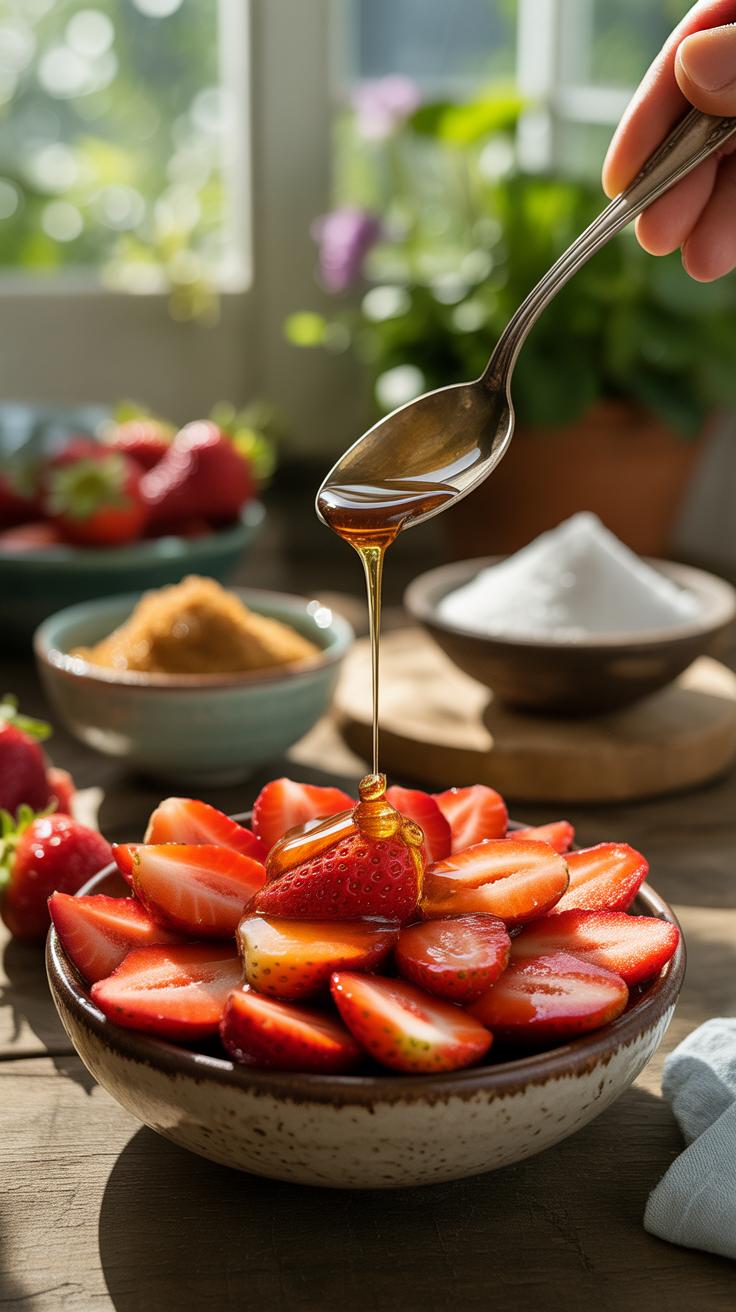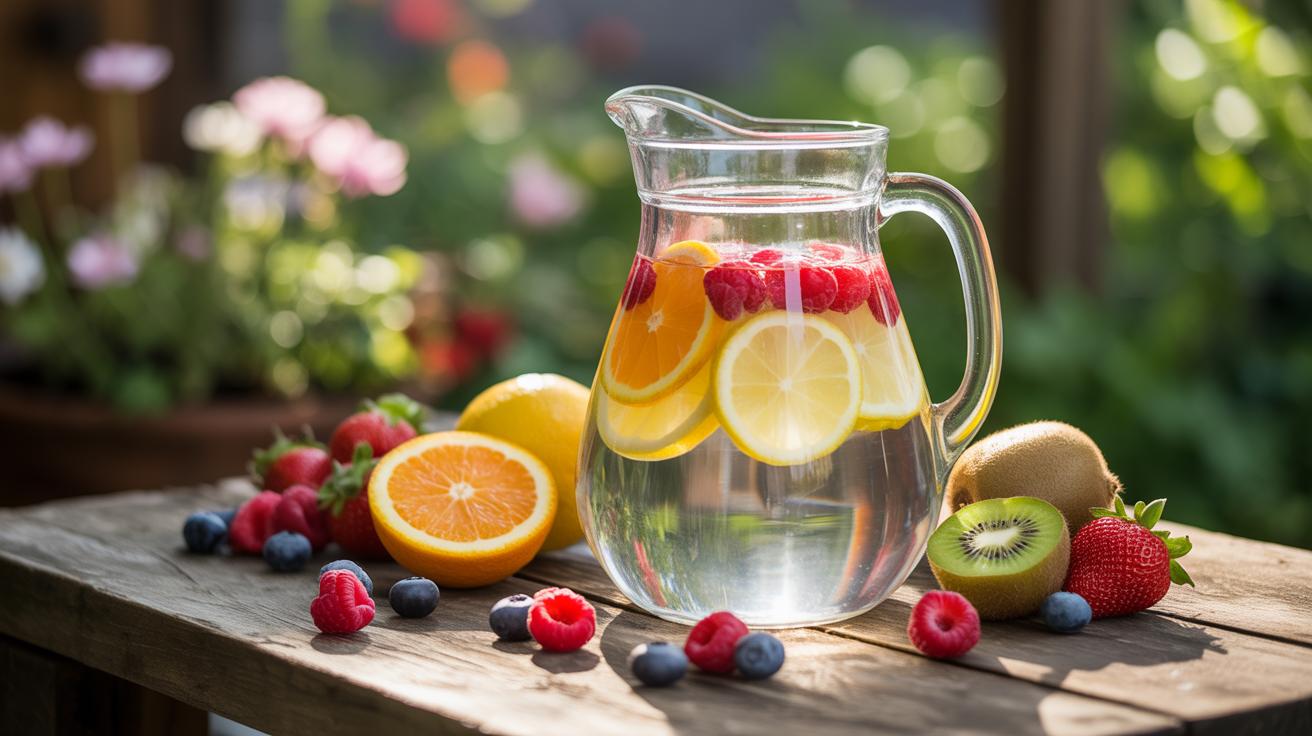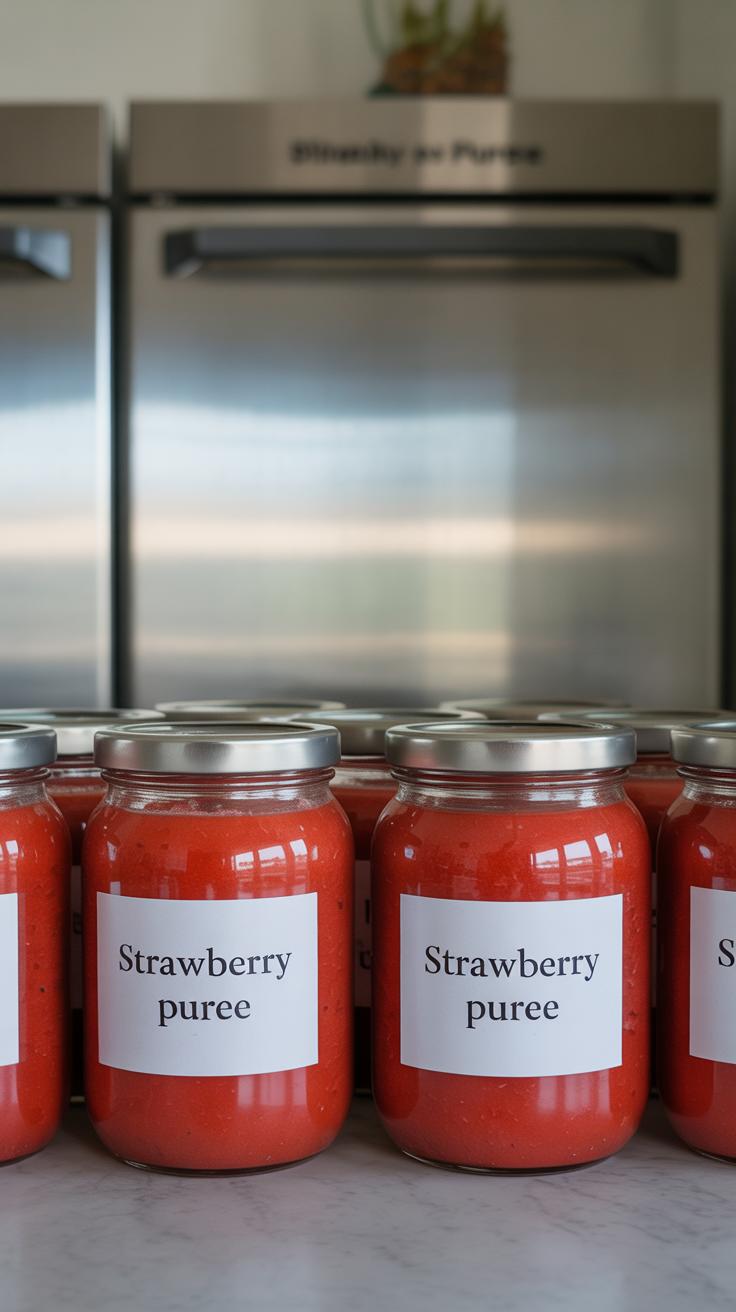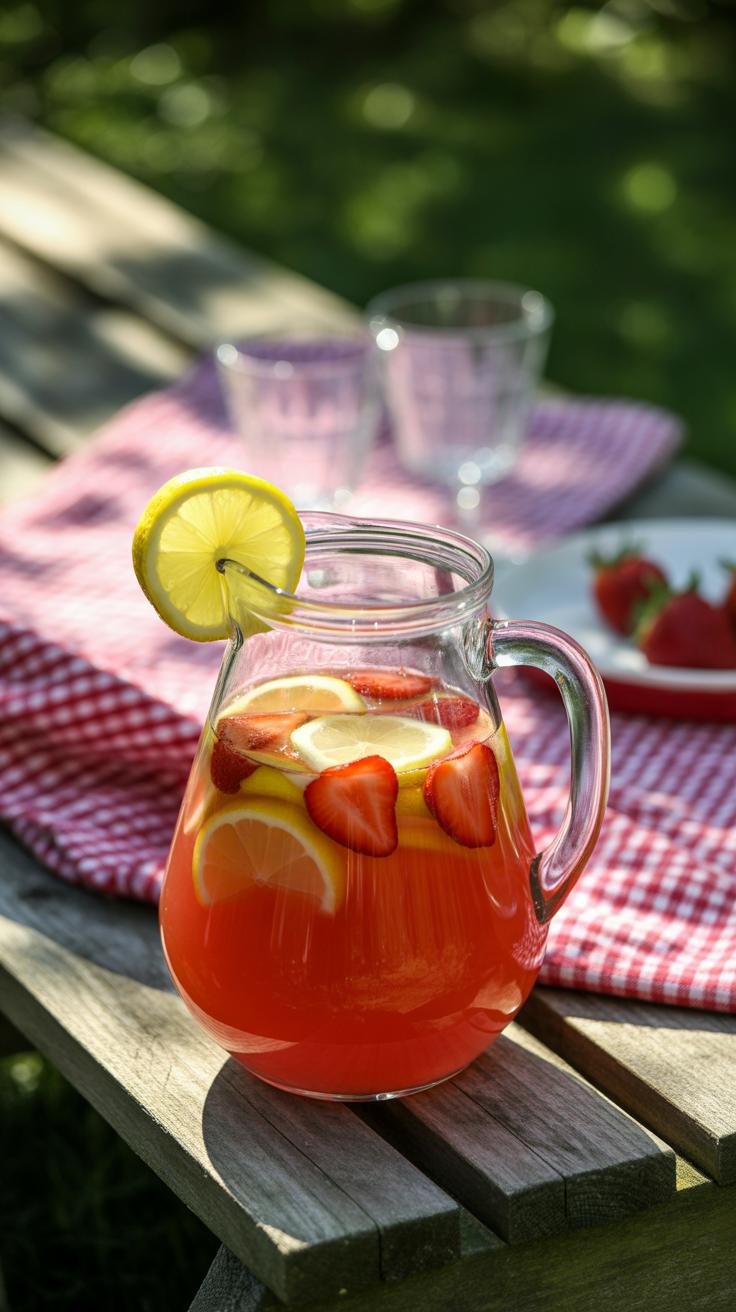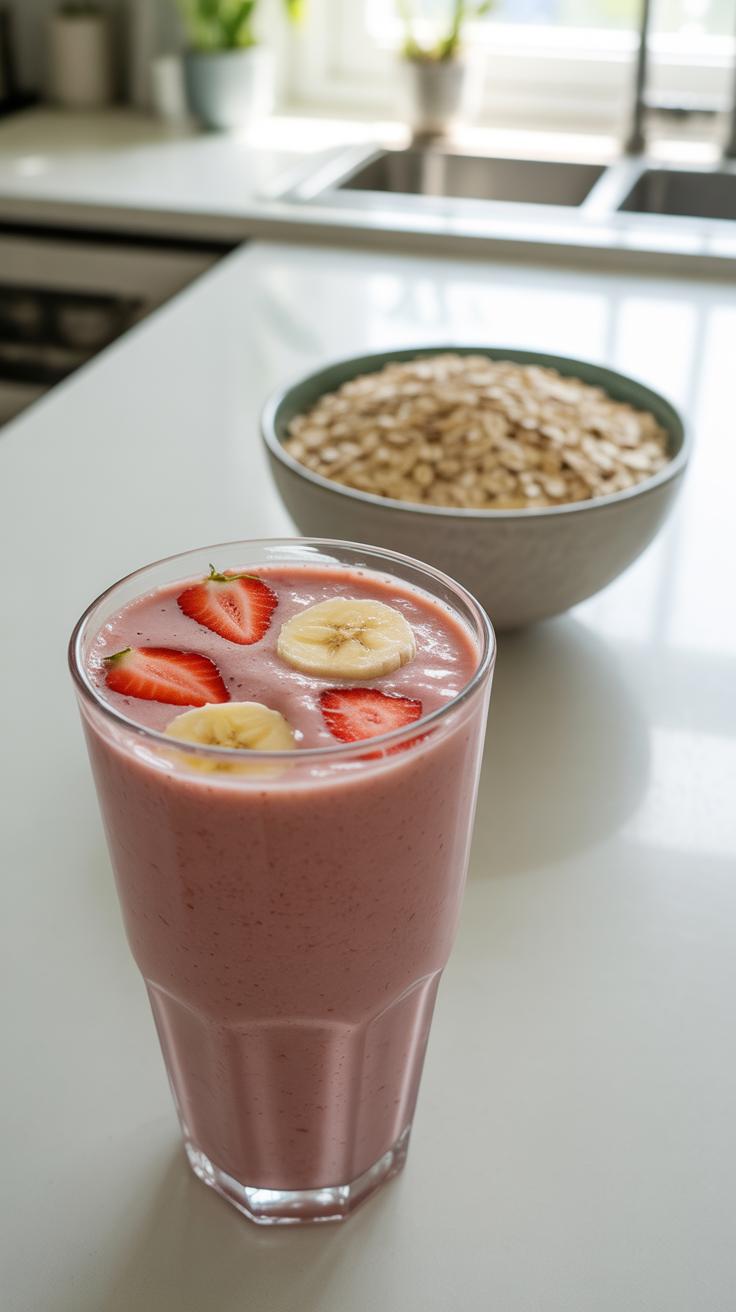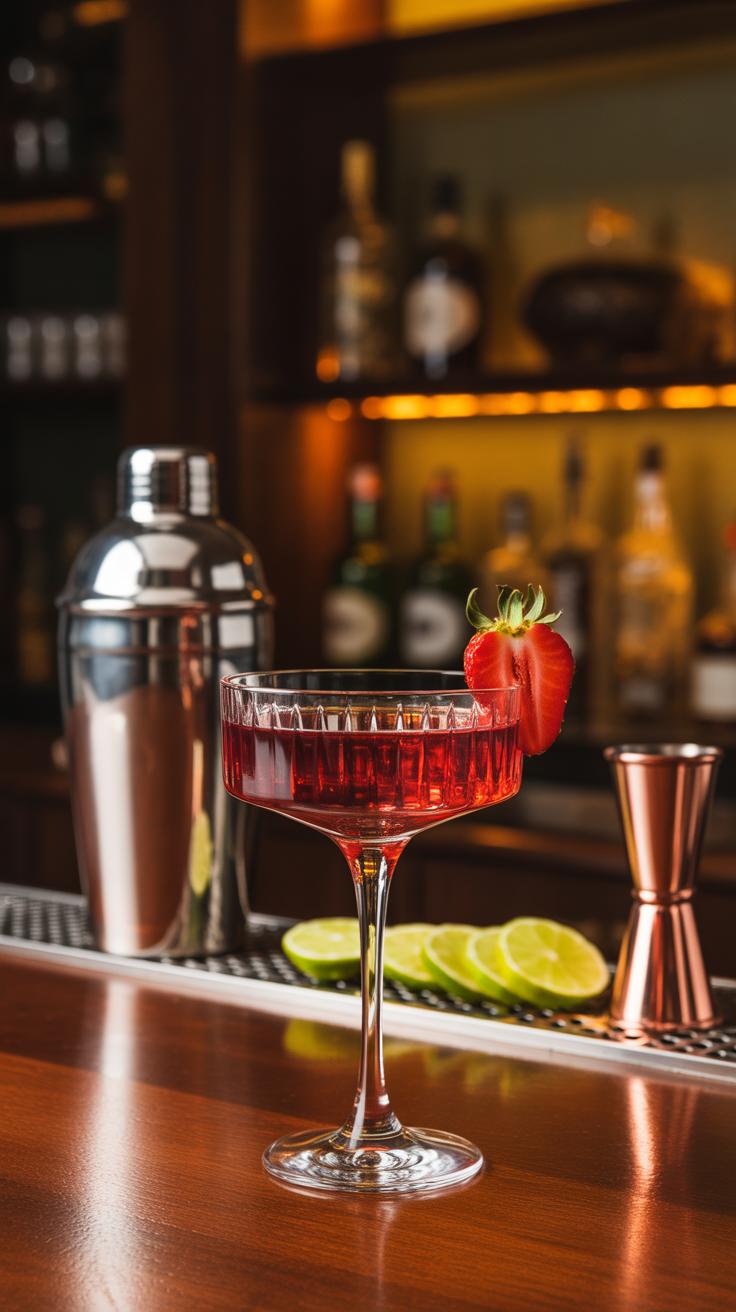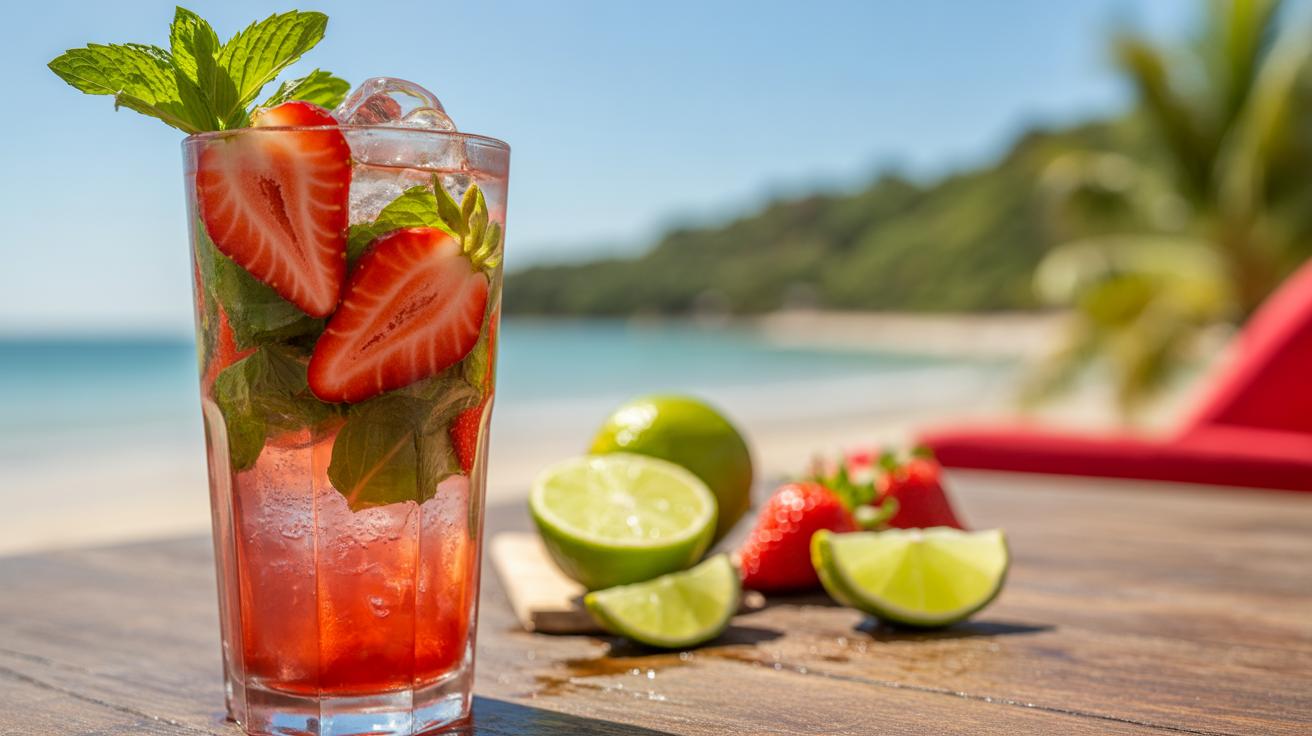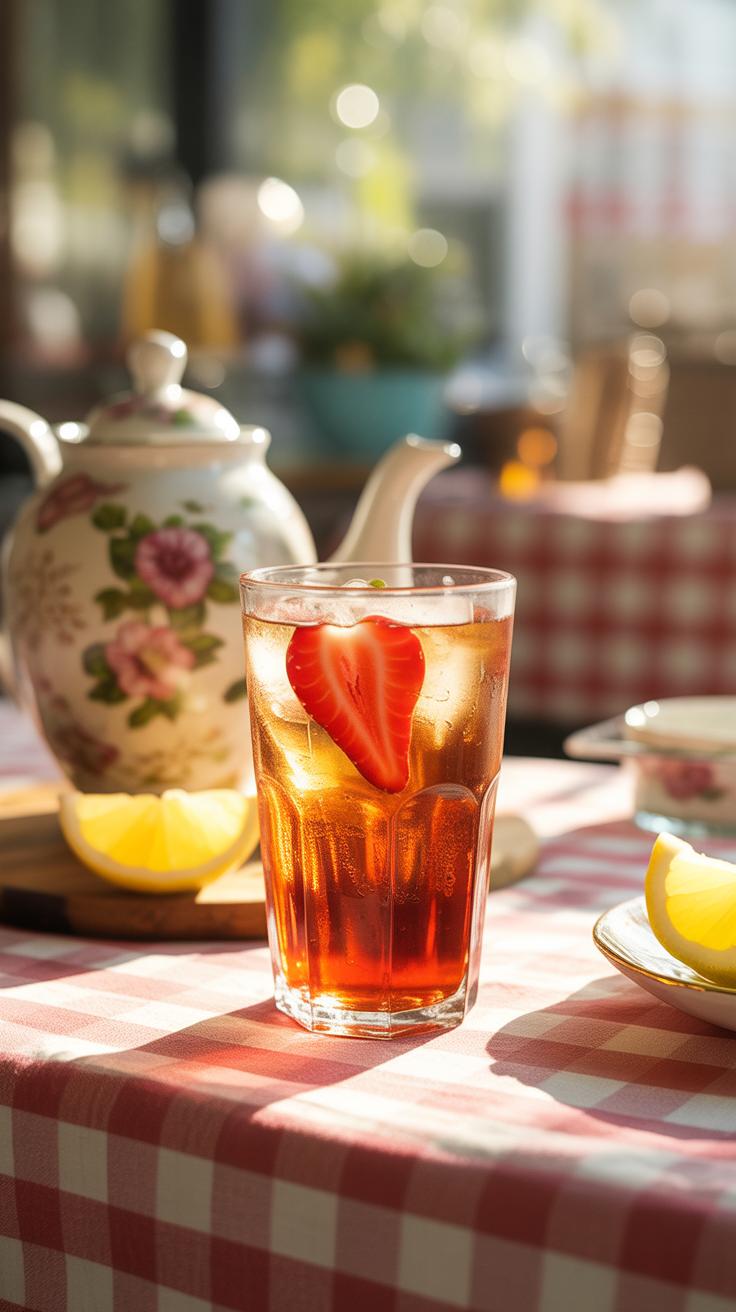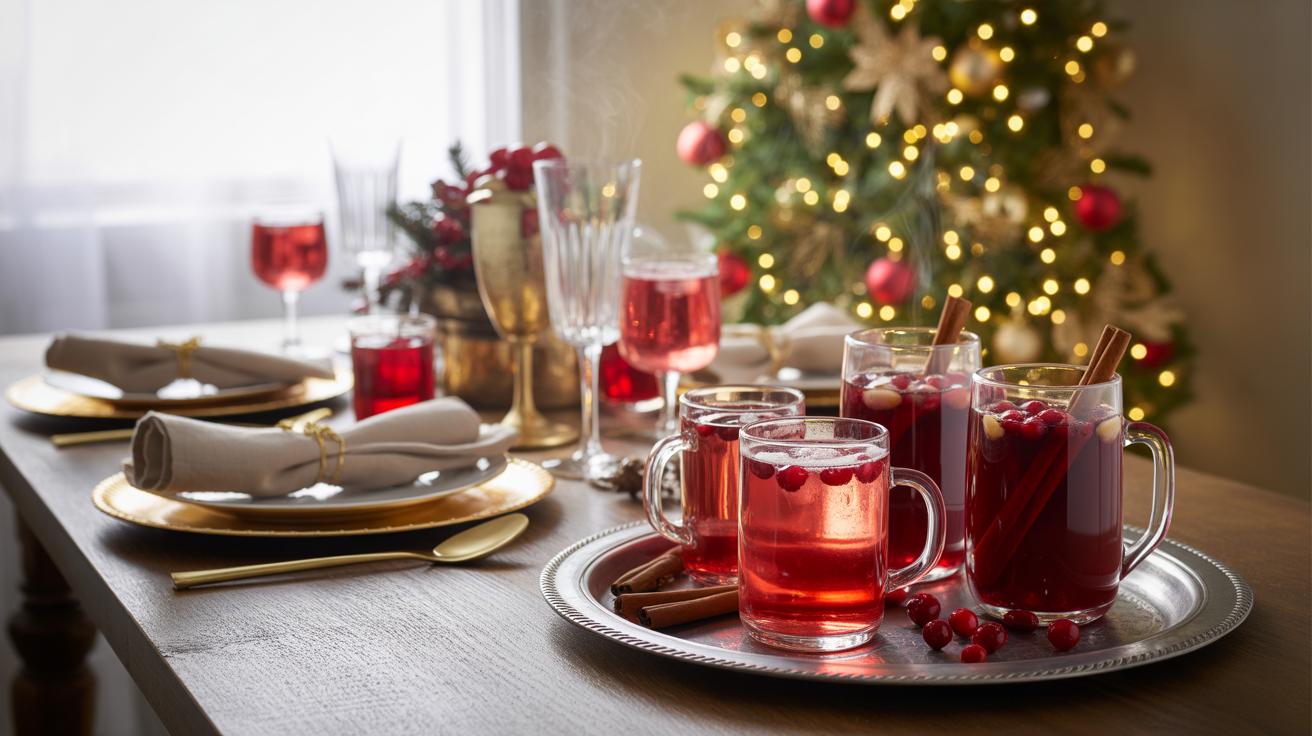Introduction
Strawberry puree is a simple, tasty ingredient that brings fresh flavor to many drinks. Making your own puree at home is easy and lets you control the sweetness and freshness. Using fresh strawberries, you can quickly turn them into a smooth liquid to add to juices, shakes, or cocktails.
This article explores various easy strawberry puree ideas for fresh drinks. From learning how to prepare the puree to trying out creative recipes, you will find practical guidance to enjoy lovely beverages. Let’s dive into the world of strawberries and discover how you can make your drinks more fun and flavorful.
Choosing the Best Strawberries for Puree
When picking strawberries for puree, ripeness plays a huge role in the final taste. You want berries that are fully red, with no white or green patches left. Those spots usually mean the strawberry isn’t quite sweet yet, which can make your puree feel a bit bland or even tart. But, here’s the tricky part: the strawberries should also be firm to the touch. If they’re too soft, they might be overly ripe or starting to spoil, which affects the texture. Firmness helps keep the puree smooth instead of watery or mushy.
Size can matter, though maybe not as much as you’d think. Larger berries tend to have more flavor, but sometimes smaller ones pack a surprising punch. Just make sure whatever size you choose has good color and firmness.
Now, avoid any strawberries that show damage, bruises, or mold. Spoiled fruit can introduce off flavors or even risk your health. It might seem tempting to use those with minor blemishes—after all, you’re going to blend them—but I wouldn’t risk it. Mold isn’t always visible, and bad fruit impacts the freshness of your puree, making it less enjoyable.
So, ideally, go for fresh, ripe, firm strawberries without blemishes. Your taste buds likely will thank you. Have you ever tried making puree with less-than-perfect fruit? The results aren’t always what you expect—sometimes it’s still okay, sometimes less so. It’s a bit of a gamble.
Simple Steps to Make Fresh Strawberry Puree
Washing and Preparing Strawberries
Start by rinsing your strawberries under cold running water. Don’t rush this part—gently swirl them around to remove dirt and any residual pesticides. It’s tempting to soak them, but too much water can make strawberries soggy or dilute their flavor.
After washing, you’ll need to hull the strawberries, which means removing the green leafy tops and the small stem. You can do this with a paring knife or a specialized strawberry huller. Try to peel just enough so you don’t waste the fruit—those green bits won’t blend well and might add a slight bitterness.
If you find some strawberries are slightly bruised or overly soft, trim the affected areas before blending. These won’t ruin the puree, but they can affect texture or taste.
Blending Strawberries into a Smooth Puree
Once prepared, place the strawberries in a blender or food processor. A high-speed blender can get the job done quickly, but even a basic food processor will work. Pulse a few times, then blend continuously for about 20 to 30 seconds. You want a smooth texture but not so thin that it becomes watery.
If the puree feels too thick, add a splash of water or a bit of fresh lemon juice to loosen it up—lemon can brighten the flavor oddly enough. On the other hand, if it’s too watery, try pulsing it briefly or straining with a fine mesh sieve to remove excess juice. Everyone’s taste varies here; I often end up adjusting the thickness a couple of times before settling.
Remember to scrape down the sides occasionally to blend everything evenly. Sometimes, the blender can leave chunks stuck on the edge, and missing those can lead to uneven results.
Sweetening Your Strawberry Puree Naturally
When it comes to brightening up your strawberry puree, adding sweetness can really bring out the flavor. But maybe you’d prefer to avoid processed sugars—that’s where natural sweeteners come in. They not only add sweetness but also introduce subtle layers of taste that can make your drinks more interesting.
Using Honey for Sweetness
Honey is a classic choice for this. A spoonful stirred into your puree does more than just sweeten; it adds a hint of floral or even herbal notes, depending on the type of honey. I’ve found that raw honey works best because it feels less artificial and has a thicker texture that blends nicely. If you add it while the puree is still slightly warm, it dissolves smoothly, making the puree silky. But if you add too much, it can overpower the natural strawberry taste, so it’s a bit of a balancing act.
Alternative Natural Sweeteners
Agave syrup and maple syrup are other good options. Agave syrup has a neutral flavor with mild caramel hints, and it dissolves very quickly, so it’s convenient for finer drinks like cocktails or iced teas. Maple syrup, on the other hand, has a stronger, more earthy profile. I sometimes use it when I want a slightly richer, almost autumnal twist to the strawberry puree—it pairs surprisingly well with fresh mint or lemon.
Both of these alternatives are sweeter than honey by volume, so you usually need less. But, you might want to experiment a little to find your perfect sweetness level. It’s interesting how each sweetener shifts the puree’s character, isn’t it? Have you tried mixing them or maybe layering different natural sweeteners? That can add some complexity you might not expect.
Storing Strawberry Puree for Freshness
Refrigerating and using within days
Once you’ve made your strawberry puree, you can keep it in the fridge, but timing matters. Ideally, store it in an airtight container to slow down oxidation and keep it tasting fresh. I’ve found that using it within three to four days works best. Beyond that, the flavor tends to fade, and the texture might become a bit watery or grainy. You might notice a slight change in color, too—nothing harmful, just a sign it’s time to use it up. If you plan to mix the puree into drinks, try to prep your batches in smaller portions that you can finish quickly. You don’t want to waste that fresh strawberry punch.
One thing I didn’t expect was how quickly the fridge’s temperature fluctuations can affect the puree. So, keep it in the coldest part of the fridge, not in the door where things get warmer as it opens and closes.
Freezing for longer storage
If you want to keep strawberry puree longer, freezing is your friend. Pour the puree into freezer-safe containers or, even better, use ice cube trays for portion control. This way, you can thaw only what you need without defrosting a big batch. When frozen in cubes, the puree lasts several months without losing too much flavor, though it might lose a bit of texture once thawed. For me, that’s fine because it goes straight into smoothies or iced drinks where texture isn’t a big deal.
To freeze, leave a little space at the top of the container—puree expands as it freezes. Once frozen, pop the cubes out and store them in a sealed bag to save space. When you take puree cubes from the freezer, thaw them in the fridge or at room temperature for quicker use. Just remember, refreezing can really damage the quality, so try to plan your portions thoughtfully.
Do you usually freeze your homemade purees? It’s a simple step, but it can save a lot of fresh flavor for when you want it most. I think freezing helps stretch the joy of summer strawberries well into chilly months.
Refreshing Strawberry Lemonade with Puree
Making strawberry lemonade with fresh puree is simpler than you might think. Start by blending fresh strawberries until smooth—that’s your puree. Then, mix it with freshly squeezed lemon juice and cold water. You’ll want to adjust the sweetness to your taste; a touch of honey or agave syrup works well here, but you might find you don’t need much if your strawberries are ripe.
When combining, add the puree slowly to the lemon and water mix, stirring gently so everything blends evenly. You’ll notice the vibrant pink color spreading through the lemonade—that’s a good sign it’s coming together nicely. Taste as you go; it’s easy to add more lemon or sweetener if it feels off balance.
Mixing fresh ingredients
For a well-rounded flavor, try these tips:
- Use about one cup of puree for every four cups of lemonade—this ratio balances fruitiness with tartness.
- Mix the lemon juice and water first, then fold in the puree. This helps avoid clumps.
- Adjust sweetness gradually; too much at once can overpower everything else.
- If you want it fizzy, replace some water with sparkling water just before serving.
Garnish and serve ideas
Presentation can really elevate this simple drink. Consider adding a few whole strawberries on skewers or lemon slices inside the glass. Fresh mint leaves bring a bright contrast, and a rim dipped in sugar adds a subtle touch. Serve over ice to keep it chilled longer—this prevents dilution, so the crema stays strong.
Sometimes, I find just a simple lemon wheel and a couple of strawberries floating on top does the trick without going overboard. It’s refreshing and inviting, and honestly, it makes me want to reach for a second glass before the afternoon’s even over.
Strawberry Puree Smoothies for Quick Energy
Strawberry puree is a fantastic base for smoothies that give you a quick boost without feeling heavy. When you blend that bright, fresh flavor with other fruits like banana or mango, the texture shifts—banana adds creaminess while mango brings a tropical twist. It’s a simple way to vary your smoothie without needing a dozen ingredients.
Try combining about half a cup of strawberry puree with one ripe banana and a handful of spinach for something green but still fruity. The natural sweetness balances the earthiness, making it more palatable than you might expect.
Adding yogurt, whether plain or Greek-style, does more than just thicken the smoothie. It introduces protein and probiotics that help keep you full longer, especially if you drink this mid-morning or after a workout. Toss in a scoop of protein powder if you want an extra kick, but sometimes just the yogurt feels just right.
What’s interesting is how these additions can change the energy you get. Pure fruit sugars give a fast lift, but protein slows the release, which might mean fewer crashes. You might want to experiment a bit to find what works best for your day—do you want something quick and light or more substantial? Either way, strawberry puree is a flexible, tasty starting point.
Creating Strawberry Cocktails with Puree
Using strawberry puree in cocktails can turn a simple drink into something memorable. The natural sweetness and fresh flavor add depth without overpowering other ingredients. I’ve found it particularly easy to blend with sparkling wines or light spirits because it keeps the drink bright and refreshing, instead of heavy.
Here’s a basic recipe you might like: the Strawberry Bellini. You’ll just need about 2 tablespoons of strawberry puree and a glass of chilled sparkling wine. Pour the puree into a flute, then slowly top it with the wine. Gently stir if you want, but it’s fine to leave it layered for a nice visual effect. The strawberries lend a subtle fruitiness that pairs beautifully with the dryness of the wine. Perfect for brunch or an easy evening treat.
Beyond the Bellini, strawberry puree works well in mixed drinks too:
- Strawberry Daiquiri – blend puree with white rum, lime juice, and ice for a smooth, sweet sip.
- Strawberry Margarita – swap out some of the usual lime or orange juice for puree to add fresh fruit flavor.
- Strawberry Mojito – muddle mint with sugar, mix in strawberry puree and rum, then top with soda.
Sometimes you want your cocktail tart, sometimes sweeter, so the puree lets you control that balance naturally. Have you tried mixing strawberry puree in unexpected recipes? It’s one of those simple additions that makes cocktail hours a little more interesting—and maybe a bit more fun to experiment with.
Adding Strawberry Puree to Iced Teas
Choosing the right tea base
Not all teas match strawberry puree equally. Black teas bring a strong, slightly bitter base that contrasts nicely with the sweet, tangy flavor of strawberries. Sometimes the boldness can overwhelm, though — so I’d suggest going for lighter black teas like Darjeeling or Ceylon. Green teas, on the other hand, tend to be more delicate and grassy, offering a subtle, fresh backdrop that lets the strawberry flavor shine without competing. White teas are even milder, which might work if you want the fruit to be the real star.
Herbal teas like hibiscus or chamomile can add interesting floral or tart notes, pulling the drink in another direction. You might find that combination unexpectedly pleasant or confusing, depending on your taste. It’s a bit of trial and error, but those teas open up creative possibilities.
Sweetening and serving iced tea
When you add strawberry puree, you’re already bringing natural sweetness, so extra sugar isn’t always necessary. If you do want to sweeten, try honey or agave syrup — they dissolve well and add a gentle flavor that complements the berry. I like to mix sweetener into the tea while it’s still warm to help it blend better.
Serving really matters. Chill your tea thoroughly before mixing in the puree to keep the drink refreshing and crisp. Add plenty of ice, and maybe a few fresh strawberry slices for texture. You could even freeze some puree in ice cube trays and toss those in; they melt slowly, giving bursts of flavor without diluting much.
Have you ever wondered if it’s better to blend the puree directly into the tea or spoon it in afterward? Blending makes the drink smoother, but keeping it separate gives you a little surprise—bits of strawberry popping up as you sip. Both have their charm, so you might want to experiment a bit to see which you prefer.
Creative Uses of Strawberry Puree Beyond Drinks
Strawberry puree isn’t just for drinks. You can fold it into so many other foods, making everyday dishes a bit more interesting. For example, using it as a dessert topping is pretty straightforward, but it can really change the game.
Strawberry Puree as a Dessert Topping
Pour strawberry puree over vanilla ice cream for a fresh twist. The cool creaminess paired with tangy strawberries feels simple but satisfying. On pancakes, it acts almost like a natural syrup, adding sweetness without that heavy, sticky feel you sometimes get from store-bought syrups. I’ve also found it brightens plain yogurt—both the taste and the look—making breakfast feel a little less routine. If you want, add a handful of nuts or granola for texture.
Incorporating Puree into Sauces
Beyond sweet uses, strawberry puree can sneak into sauces that accompany meat or cheese. Try mixing it with balsamic vinegar and a touch of pepper to create a glaze for roasted chicken or pork. It cuts through richness while adding a subtle fruitiness—unexpected but somehow natural. On the sweeter side, blending the puree with a bit of honey and lemon juice makes a vibrant drizzle for desserts like cheesecake or panna cotta.
Does it always fit? Maybe not. But these small experiments with strawberry puree might just make you look at it differently—not just a drink ingredient but something to explore across your kitchen.
Conclusions
Strawberry puree is a great way to add brightness and flavor to your drinks. Making it fresh at home is a simple process, and you can mix it into many types of beverages to enjoy a natural taste. You saw different ways to prepare and use strawberry puree through practical ideas in this article.
Now, with the knowledge you gained, you can experiment with your drinks and bring a fresh twist anytime you like. Just grab some strawberries, puree them, and get creative with your recipes. Your fresh drinks will be tasty and refreshing, perfect for any occasion.

